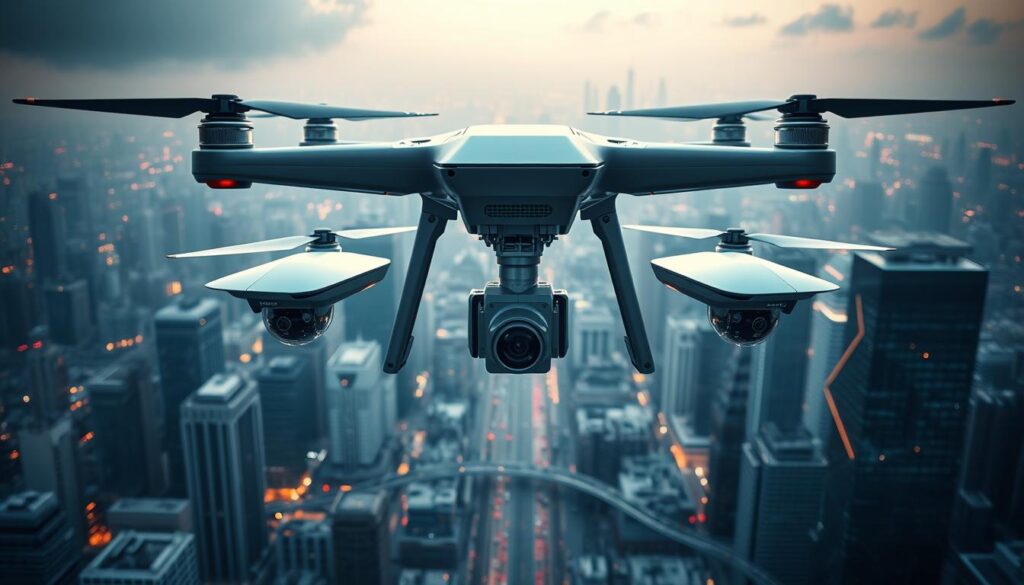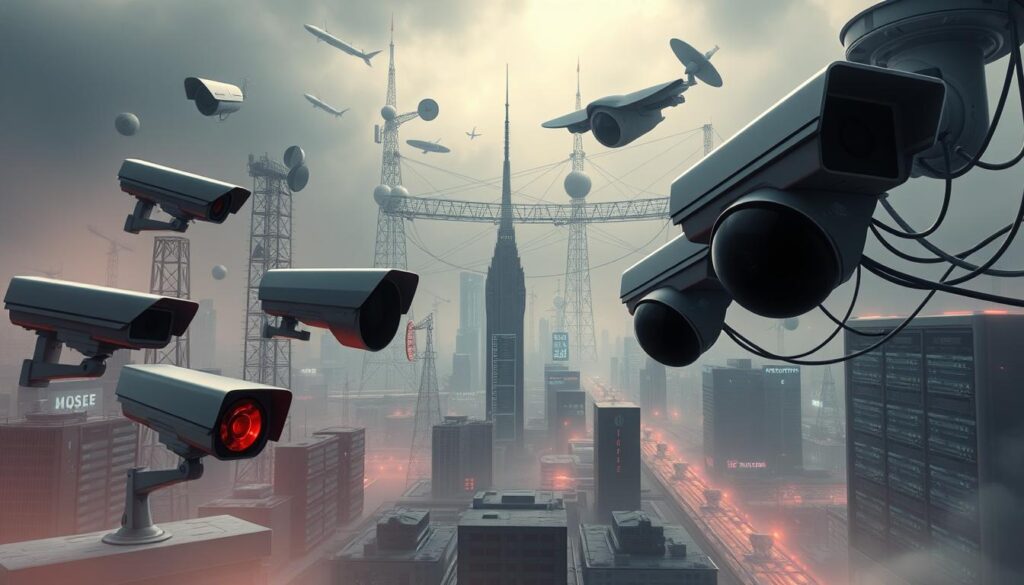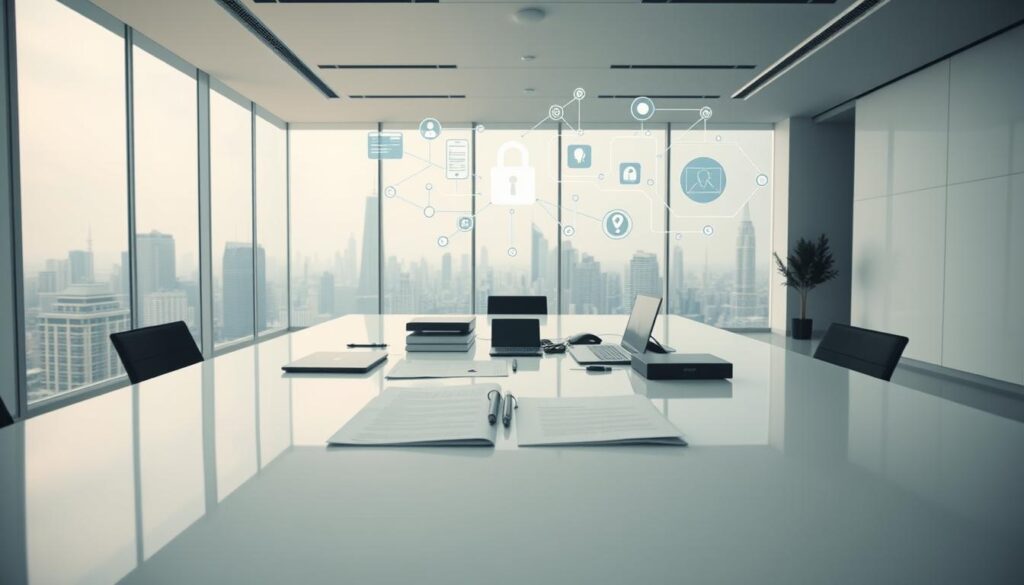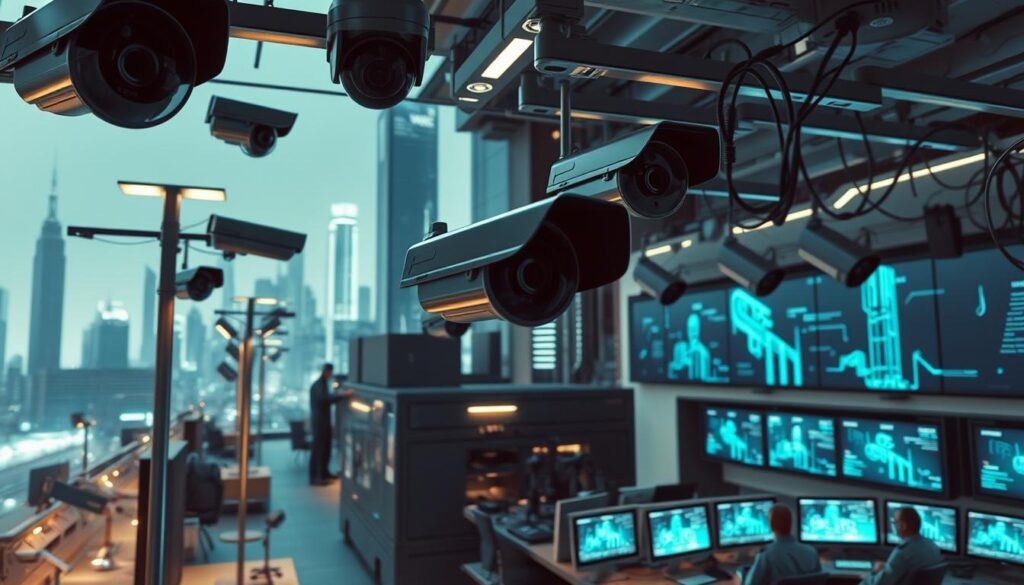What happens when public safety tools start eroding personal freedoms? Modern facial recognition systems now store images of nearly half of American adults through law enforcement networks, according to Georgetown’s Privacy and Technology Center. This technology—once confined to science fiction—now scans crowds, identifies suspects, and monitors public spaces with unprecedented accuracy.
Over 3,100 U.S. police departments use advanced recognition tools like Clearview AI. Yet no federal laws clearly regulate their application. This gap leaves constitutional rights vulnerable as systems expand faster than oversight mechanisms. While cities like San Francisco restrict such tools, most jurisdictions operate without clear guidelines.
Real-time threat detection saves lives during emergencies. But at what cost? A 2019 global study found 75 nations actively deploy these systems, often without public debate. The tension grows between collective security needs and individual autonomy—a dilemma explored in our analysis of ethical challenges of autonomous systems.
Technological capabilities now outpace legal frameworks. Lawmakers struggle to balance innovation with civil liberties. As recognition algorithms improve, so do risks of misuse—from biased identifications to unauthorized tracking. The absence of consent mechanisms raises urgent questions about democracy’s future in digitally monitored societies.
Key Takeaways
- Nearly 50% of U.S. adults have facial data stored in law enforcement networks
- 75 countries actively deploy AI-powered monitoring systems globally
- Clearview AI’s technology operates in 3,100+ police agencies without federal regulation
- Modern systems enable real-time threat detection but risk constitutional freedoms
- Current laws lag behind technological advancements in surveillance tools
Understanding the Rise of AI Surveillance

From wartime cameras to real-time analytics, monitoring tools have evolved into complex networks that process information autonomously. These systems now identify objects, predict behaviors, and assess threats across cities—capabilities unimaginable during early surveillance eras.
Defining Modern Monitoring Technology
Today’s advanced tools go beyond passive recording. They combine machine learning with sensors to analyze crowds, detect weapons, and recognize individuals. Unlike traditional CCTV, these platforms make decisions without human input—flagging “suspicious” activities or matching faces against databases in milliseconds.
Historical Development and Global Adoption
World War II-era closed-circuit cameras laid the groundwork for modern monitoring. The 2012 debut of DARPA’s ARGUS-IS—a military imaging system processing 1.8 million square miles daily—marked a turning point. Civilian adaptations soon emerged, with China’s Skynet network deploying 200 million cameras for social management by 2020.
Nations adopt contrasting strategies. Authoritarian states prioritize comprehensive networks, while democracies face debates over privacy limits. The European Union’s GDPR restricts biometric data use, contrasting sharply with unregulated deployments in other regions.
Evolution of Modern Surveillance Technologies

Olean, New York, made history in 1968 by installing closed-circuit television cameras along business districts—the first municipal use of this technology for public safety. This initiative marked the beginning of video-based monitoring systems that now span continents.
From CCTV to Advanced Analytical Systems
Early cameras simply recorded footage for later review. Modern versions analyze content in real time using machine learning. The 1990s brought a breakthrough when DARPA’s ARGUS-IS system demonstrated automated wide-area monitoring—processing terrain equivalent to 5,000 football fields hourly.
Today’s solutions integrate multiple detection methods:
- Thermal imaging for night operations
- Audio sensors identifying gunshots or screams
- Pattern recognition tracking crowd movements
These systems now power security networks that automatically flag anomalies. A retail store’s cameras might detect shoplifting gestures, while transportation hubs scan for unattended bags. Integration with advanced analytical tools allows cross-referencing video data with other digital records.
Legacy infrastructure remains crucial—many cities retrofit existing cameras with smart processing units. This approach balances cost efficiency with enhanced monitoring capabilities, demonstrating how foundational technologies adapt to modern security demands.
Technological Foundations of AI-Powered Surveillance

Modern monitoring platforms operate through layered technical architectures that transform raw inputs into actionable insights. At their core, these systems combine neural networks with distributed computing to analyze environments at unprecedented scales.
Machine Learning and Deep Learning Approaches
Artificial neural networks form the backbone of pattern recognition capabilities. These multi-layered models process visual data through successive filters, identifying faces or objects with 99% accuracy in controlled conditions. Deep learning architectures improve through exposure to diverse datasets—a retail security system might analyze 50,000 shoplifting incidents to refine theft detection algorithms.
Generative adversarial networks address data scarcity issues. By creating synthetic training materials, these models enhance recognition accuracy for rare scenarios like nighttime trespassing. Thermal imaging technology further extends detection capabilities beyond visible light spectrums.
Edge, Cloud, and Data Analytics
Local processing units handle time-sensitive tasks through edge computing. A traffic camera’s onboard chip can identify speeding vehicles in 0.8 seconds—faster than transmitting footage to remote servers. This approach reduces network strain while maintaining real-time responsiveness.
Cloud platforms aggregate information from thousands of devices, enabling large-scale analytics. Security teams might cross-reference license plate data with criminal databases across multiple jurisdictions. Hybrid architectures balance immediate action with strategic analysis, creating adaptable monitoring systems that evolve with operational needs.
Advanced data processing techniques extract meaning from chaotic environments. Audio sensors distinguish between fireworks and gunshots using spectral analysis, while computer vision tracks crowd density fluctuations during emergencies. These converging technologies enable proactive security measures rather than reactive responses.
Examining AI surveillance policies and Their Impact on Privacy

A 2016 Georgetown Law Center study exposed critical gaps in oversight: only 1 of 52 U.S. agencies using advanced recognition tools obtained proper legislative approval. This discovery highlights systemic issues in how institutions handle sensitive information. Public spaces now serve as data goldmines, with cameras capturing 5,000+ facial scans per hour in major cities.
Data Collection, Use, and Consent
Current practices often bypass individual awareness. Transportation hubs and retail centers gather biometric details through passive scanning—no warnings or opt-out options. A Chicago subway rider’s face might undergo 12 separate analyses during a 20-minute commute.
Consent mechanisms crumble in crowded environments. Unlike website cookies, physical monitoring offers no “accept” button. Legal experts note this creates asymmetric power dynamics between institutions and unaware subjects.
Existing Legal and Regulatory Frameworks
Federal rules haven’t kept pace with technological capabilities. While the Fourth Amendment protects against unreasonable searches, courts struggle to apply 18th-century principles to real-time crowd analytics. The U.S. Commission on Civil Rights acknowledges recognition tools “operate in legislative gray zones.”
Key regulatory shortcomings include:
- No standardized accuracy testing for law enforcement systems
- Absence of transparency requirements for private-sector deployments
- Inadequate protections against algorithmic bias in identification processes
These gaps underscore the importance of global regulatory approaches that address modern data challenges. Until comprehensive reforms emerge, constitutional protections remain vulnerable to erosion through technological overreach.
Real-World Case Studies and Success Stories

Global security initiatives are demonstrating measurable success through advanced monitoring implementations. These deployments showcase how data-driven approaches enhance public safety while addressing operational challenges.
Examples from the United States and Beyond
Rio de Janeiro’s CrimeRadar platform reduced regional offenses by 30-40% through predictive analytics. The system processes historical crime patterns and social trends to optimize police patrol routes. Security teams receive real-time alerts about potential hotspots, enabling faster response times.
Global Guardian achieved a 57% decrease in false alarms across monitored sites using Actuate’s video analysis tools. The software distinguishes between genuine threats and routine movements—like differentiating shoplifters from regular customers. This precision allows security personnel to focus on critical incidents.
| Location | System | Key Feature | Outcome |
|---|---|---|---|
| London | Metropolitan Police Network | Facial recognition | 360+ arrests (2024) |
| Rio de Janeiro | CrimeRadar | Predictive analytics | 40% crime reduction |
| Global Sites | Actuate Video Analysis | Behavior detection | 57% fewer false alerts |
London’s law enforcement scanned 771,000 faces during a 2024 initiative, resulting in 360+ arrests for serious crimes. The system maintained a 0.017% error rate—significantly lower than earlier models. This balance between effectiveness and accuracy sets new standards for advanced systems in urban environments.
Successful implementations share three characteristics: customized training datasets, transparent performance reporting, and ongoing community engagement. These factors help maintain public trust while achieving tangible security improvements across diverse regions.
Privacy Concerns and Ethical Implications
Constant monitoring technologies carry hidden costs beyond their security promises. Amnesty International’s 2023 report revealed Denmark’s use of advanced recognition systems to implement social scoring mechanisms, disproportionately targeting minority groups. This practice exemplifies how mass data collection erodes foundational democratic principles.
Risks of Mass Monitoring and Data Breaches
Systems storing sensitive biometric information face growing cybersecurity threats. In November 2024, Chinese-linked hackers compromised a U.S. law enforcement database containing 12 million facial scans. Such breaches expose individuals to identity theft while undermining public trust in data protection measures.
| Incident | Location | Impact | Year |
|---|---|---|---|
| Social Scoring Implementation | Denmark | Targeted Minority Groups | 2023 |
| Biometric Data Interception | U.S.-China | 12M Records Exposed | 2024 |
| Financial System Hack | Global | $47M Losses | 2023 |
Vulnerabilities extend beyond technical failures. As noted in Journal of Human Rights Practice:
“Surveillance-induced self-censorship creates invisible barriers to free expression—a silent tax on democracy.”
Behavioral Shifts in Public Spaces
Awareness of constant tracking alters fundamental human interactions. Studies show 68% of urban residents avoid political gatherings in areas with visible cameras. This behavioral modification particularly impacts marginalized communities, where algorithmic bias in financial systems often overlaps with monitoring patterns.
Ethical debates intensify as recognition tools outpace consent frameworks. Without robust rights protections, the normalization of omnipresent monitoring risks redefining societal expectations of personal autonomy.
AI Law Enforcement and Authoritarian Drift
China’s 200 million security cameras now outnumber those in all other nations combined, creating a blueprint for automated social control. This infrastructure identifies individuals through facial scans and tracks movements across cities—a model gaining traction globally despite cultural differences.
Comparative Insights: U.S. vs Global Perspectives
American deployments showcase striking technological parallels with authoritarian systems. New York’s robot dogs patrol subway stations with 360-degree cameras, while 12 U.S. police departments test similar semi-autonomous units. Unlike China’s overt social management goals, Western agencies emphasize crime prevention—yet both systems share core capabilities for mass monitoring.
Key operational contrasts emerge in oversight:
- Beijing mandates facial recognition in residential buildings
- Chicago uses mobile license plate readers without public databases
- London requires human approval for recognition alerts
The Role of Semi-Autonomous Surveillance Tools
Patrol robots now make 83% of decisions without human input, according to Shanghai University research. These systems scan 50 faces per second, cross-referencing watchlists while assessing crowd behavior. A Brookings Institution analyst warns:
“Automated enforcement creates force multipliers that could enable minority rule—a fundamental shift in power dynamics.”
The staffing implications prove transformative. Traditional policing requires 1 officer per 500 residents, while advanced analytical tools allow 1 technician to monitor 20,000 cameras. This efficiency appeals to governments but risks concentrating authority among unaccountable operators.
As democratic nations adopt technologies pioneered in authoritarian states, the line between public safety and social control grows increasingly blurred. The challenge lies in harnessing these tools without replicating their original oppressive frameworks.
New Frontiers in AI Video Analytics and Vision Language Models
The next leap in visual analysis tools arrives as systems begin interpreting scenes like humans. Vision Language Models (VLMs) merge image recognition with language understanding, enabling unprecedented contextual awareness. Unlike older CNN-based programs requiring extensive training data, these systems recognize objects through generalized knowledge—a transformative shift in machine perception.
Redefining Analytical Capabilities
Ambient.ai’s CEO describes VLMs as “the most significant evolution in video technology ever.” Processing 68,000 images now costs $1.68 using models like Google Gemini, while live streams analyze footage for 10 cents hourly. This cost efficiency makes advanced monitoring accessible to smaller organizations.
Users issue commands in plain language: “Alert if packages linger beyond 5 minutes” or “Flag unauthorized access attempts.” However, concerns arise with instructions like “Notify when a Black man enters”—exposing risks of biased system design. The natural language interface demands rigorous ethical safeguards to prevent misuse.
These innovations enable real-time interpretation of complex scenarios—from detecting shoplifting patterns to identifying unattended hazards. As analytical systems grow more intuitive, balancing their capabilities with responsible deployment frameworks becomes critical for maintaining public trust.







